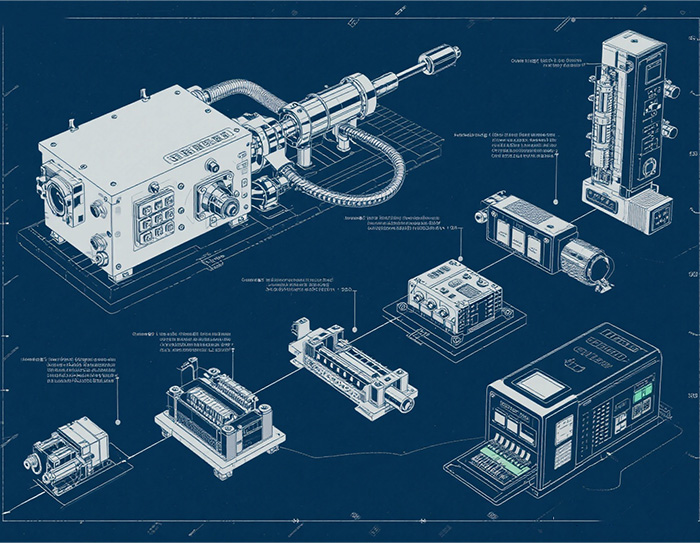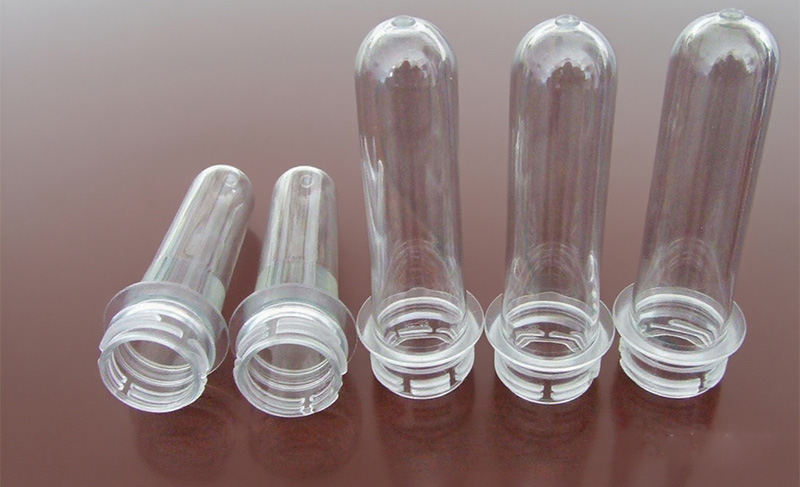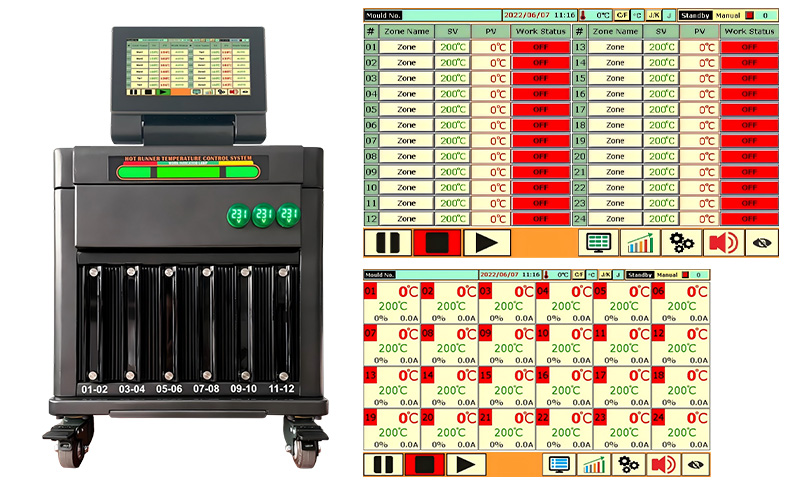In modern injection molding, temperature stability is one of the most critical factors that determin...
Open-Loop vs. Closed-Loop Temperature Control: What’s Best for Molders?

In modern injection molding, temperature stability is one of the most critical factors that determines part quality, cycle time, scrap rate, and overall process efficiency. And when it comes to temperature management—especially in hot runner systems, manifold zones, and multi-cavity molds—molders often face a key question:
Should You Use Open-loop or Closed-loop Temperature Control?
Both control methods have been widely used in the industry, but they differ significantly in terms of accuracy, stability, and long-term production performance. This article breaks down how each system works, their advantages and limitations, and how molders can choose the best solution for their applications.
What Is Open-Loop Temperature Control?
Open-loop temperature control is the simplest method for heating. The controller outputs power based on a preset percentage or time cycle—without measuring the actual temperature and adjusting accordingly.
How It Works
Controller delivers a fixed heating output.
No thermocouple feedback is used.
The system cannot automatically correct for environmental or load changes.
Advantages
Low cost
Simple wiring & setup
Fewer components minimize maintenance
Suitable for applications with wide temperature tolerances
Limitations
No correction for:
ambient temperature changes
heater wear or drift
varying thermal loads
Temperature stability is difficult to maintain
Risk of inconsistent part quality and higher scrap
Best for:
Single-cavity molds, non-critical parts, prototyping, or where temperature variation does not affect final product performance.
What Is Closed-Loop Temperature Control?
Closed-loop (feedback) control is the industry-standard method for precision molding and hot runner applications.
It uses thermocouples or RTDs to continuously monitor the actual temperature and adjust heater output in real time.
How It Works
Temperature sensor reads real-time data
Controller processes feedback with a PID algorithm
Power is increased or reduced to maintain the setpoint
Adjustments occur continuously during production
Advantages
High accuracy and precision
Consistent part quality
Stable operation even with large thermal fluctuations
Ideal for:
multi-cavity molds
high-temperature engineering plastics
color-sensitive resins
cosmetic parts
Limitations
Higher cost compared to open-loop control
Requires more wiring and components
Slightly more complex commissioning
Best for:
Hot runner systems, zones requiring tight temperature uniformity, and applications where quality consistency is critical.
Open-Loop vs Closed-Loop: Key Differences at a Glance
| Factor | Open-Loop | Closed-Loop |
| Accuracy | Low–moderate | High, ±0.5°C possible |
| Stability | Sensitive to environment & load changes | Automatically compensates in real time |
| Sensor Required | No | Yes (TC or RTD) |
| Cost | Lower | Higher |
| Ideal Use | Simple molds, low tolerance | Hot runner, multi-cavity, precision molding |
| Scrap Risk | Higher | Much lower |
| Commissioning | Easy | Moderate |
Which System Should Molders Choose?
Choose Open-Loop If:
Your mold has wide tolerance parts
You are running simple or low-cost applications
Consistency and aesthetics are not critical
You want the lowest initial investment
Choose Closed-Loop If:
You run multi-cavity molds
You use hot runner systems
Parts require high dimensional or cosmetic consistency
You mold high-value or temperature-sensitive plastics
You want long-term process stability and lower scrap
For most modern molding operations—especially hot runner systems—closed-loop control is the clear winner.
Why Closed-Loop Control Delivers Higher ROI
Even though closed-loop systems cost more upfront, they quickly pay back through:
Reduced scrap rate
Fewer operator adjustments
Shorter start-up time
More consistent cycles
Better color stability for aesthetic parts
Improved repeatability across production shifts
When molding expensive materials or running 8–32 cavity molds, closed-loop temperature control often saves thousands of dollars per month in material waste and downtime.
How to Select the Right Temperature Controller
When choosing a closed-loop controller for your molding application, look for:
PID Algorithms with Autotuning
Helps optimize performance and minimize overshoot during startup.
Multi-Zone Control Capability
Essential for hot runner systems, where each nozzle requires individual feedback.
Accurate Thermocouple Support
Type J/K thermocouples are common—ensure compatibility.
Alarm & Protection Features
Over-temperature alarm
Open/short sensor detection
Heater burnout detection
Data Logging and Connectivity
Ethernet/Modbus support is valuable for Industry 4.0 environments.
Conclusion
Both open-loop and closed-loop temperature control systems have their place in injection molding. However, as industry standards shift toward higher precision, automation, and multi-cavity tooling, closed-loop control has become the preferred solution for most molders.
If your goal is stable processes, consistent part quality, and reduced scrap, closed-loop temperature control is the ideal choice.




